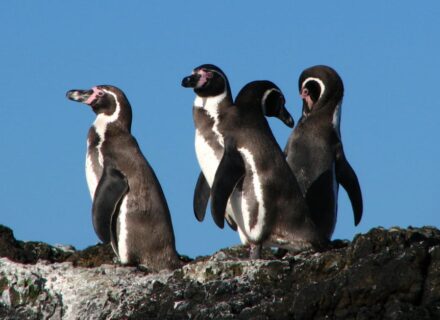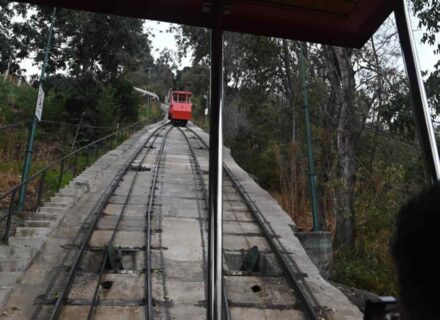Peru is one of the most diverse countries on Earth. It’s home to the highest sand dune(Cerro Blanco) and has some of the best surfing in the world (Chicama and Pacasmayo).
Most people don’t realise just how many differences there are within each region. There are coastal surf towns, historic cities, ancient ruins, jungle, desert, glacial lakes, you name it Peru is home to it.
For this reason, it’s tricky to decide just how many days in Peru a person should spend.
For those looking to complete a long trip and see the whole country, making use of the full three month visa the country allows for most foreign citizens is absolutely doable.
For those with less time, there are highlights to pick from.
Below, we will outline what you can achieve in a certain amount of time. How Many Days in Peru Is Enough For First Time Traveller?
One to Two Weeks
Travellers with short breaks in mind, it’s simple to make Peru a holiday destination full of education, exploration and excitement.
There is much to do in this cultural hub to ensure that you and your family get back from a fortnight away, filled with memories, a newfound knowledge and respect for one of South America´s most visited destinations.
Must see in up to two weeks:
Cusco
The capital of culture of the Americas and a wonderful base for any trip to Peru. Cusco is home to viewpoints, countless Inca ruins as well as an excellent point of departure for numerous treks and sights to see in the South East of Peru. Here, it is also possible to taste numerous national dishes, such as Cuy (Guinea Pig), Llama and Alpaca, Ceviche and Lomo Saltado .
- Cuy (Guinea Pig) is a traditional Peruvian meal. Around 65 million guinea pigs are consumed in Peru each year
Machu Picchu
The Lost City of the Incas and one of the seven wonders of the world, you can’t visit Peru and skip Machu Picchu .
There are numerous ways to explore this ancient Inca city, filled with mystery and suspense, which will be explained in more detail in later parts in this article.
For those with limited time, the best way to see this amazing lost city is to take a day trip, utilising the rather fancy train to Aguas Calientes (the starting point for all trips to Machu Picchu. A three and a half hour trip, costing around $70 will lead you through old towns, dense jungle, stunning riversides and between precariously balanced mountains.
Once in Aguas Calientes, you can either hike up 1800 steps to the entrance of Machu Picchu, or for those for whom the idea of such a trek is in no way shape or form fun, a $15 bus is available from the town’s main road.
Tickets to Machu Picchu are around $45 and must be booked in advance.
This does not include a guide, for which the price varies depending on who you choose to book with. You also need to take your original Passport to the entrance.
Lima
For most this is the start and end point of their trip to Peru anyway, due to the international aiport, and the country´s capital should not be skipped without experiencing it.
Due to its coastal location, ceviche is better here than almost anywhere in the country. Visit BamBam in Miraflores neighbourhood or Canta Rana in Barranco and try their Tigre de Leche (tiger milk) version of the classic dish.
And don´t miss out on the famous Pisco Sour, originating from the city at the Morris Bar, by American, Victor Morris.
One Month or More
For travellers with an extended break from work, or taking part in a longer trip across the world, Peru will grab you by the scruff and throw you through good time after good time.
Must see in up to a month:
Lima
As with above, this is the most common starting and end point for trips to Peru.
With a bit more time on your hands, discover the Inca ruins such as Pucllana, in the city centre.
If you like to take a stroll with the sea breeze in your hair, walk the 6 mile-long Malecon which adorns the city’s cliff edges, watch surfers, paragliders, tennis fanatics and skateboarders do their thing, or just sit at a café along the way.
Fashion magazine enthusiast? Visit the famous Mario Testino gallery, MATE , in Barranco, for a glimpse into the Peruvian photographer’s world behind the lens, and at only S/10 ($4) it’s hardly bank breaking.
For a post-exhibition coffee, head to a local institution, Bisetti, complete with its own in-house roastery and experimentation lab.
Huacachina
A desert dune-haven and oasis town, Huacachina is a pure delight.
A 10 minute drive from the city of Ica, you’ll feel as though you’ve been transported to another world.
Stay in accomodation beside the (now man-maintained) oasis and book an afternoon trip, where drivers of sand buggies accelerate across dunes of enormous heights, dropping you off from time to time to sand board down the side of peaks that can reach 50-60 feet in height.
This incredible trip ends with watching the sun set over the dunes in the distance, with dune buggies as the foreground, it’s very much a Star Wars fantasy, fulfilled. Absolutely exhilerating and costs around $10 for a two hour trip.
Cusco
As well as taking in the above culture, visit the market of San Pedro, where local sellers of everything from clothes and cuisine to freshly made juices holler for your custom.
The stall owners are friendly and will share with you local customs, foods, prices you should pay for things and any knowledge they have about the rest of the country. Far better than any guide book!
This incredible trip ends with watching the sun set over the dunes in the distance, with dune buggies as the foreground, it’s very much a Star Wars fantasy, fulfilled. Absolutely exhilerating and costs around $10 for a two hour trip.
Cusco
As well as taking in the above culture, visit the market of San Pedro, where local sellers of everything from clothes and cuisine to freshly made juices holler for your custom.
The stall owners are friendly and will share with you local customs, foods, prices you should pay for things and any knowledge they have about the rest of the country. Far better than any guide book!
Also explore the otherworldly Rainbow Mountain, a day trek which takes you up to a height of 5200m. It’s tough on the lungs, with such limited oxygen, and mightily cold due to the altitude, but this only makes the achievement of reaching the summit and wondering upon a mountainside with genuine rainbow qualities all the more satisfying.
For a little over $12 it will be the best money you spend on your trip.
Machu Picchu
With a little more time on your hands, you can really explore.
Book a trek up to the famous site rather than getting transportation and you will be lead through numerous climates with varying scenes to take in along the way.
The most famous trek is the Inca Trail, which varies from 2 to 5 nights depending on how much you’d like to see.
Inca Trail
It leads through the Sacred Valley, eventually bringing you to Machu Picchu via an old Inca entrance which others are unable to get to.
To preserve the trail, the Peruvian government only allow a small number of people to visit via the Inca Trail each year, due to this it is advised to book at least six months in advance.
Another trek is the Salkantay, which takes you up to 4600m above sea level via the Salkantay Pass, then back down to jungle level where you trek along the river to various campsites before eventually climbing back up to Machu Picchu.
Inca Trail
It leads through the Sacred Valley, eventually bringing you to Machu Picchu via an old Inca entrance which others are unable to get to.
To preserve the trail, the Peruvian government only allow a small number of people to visit via the Inca Trail each year, due to this it is advised to book at least six months in advance.
Another trek is the Salkantay, which takes you up to 4600m above sea level via the Salkantay Pass, then back down to jungle level where you trek along the river to various campsites before eventually climbing back up to Machu Picchu.
For this you can take between 4 and 5 days, and will see glacial lakes, bathe in hot springs, visit Incas sites and zip line over trees and rivers.
Iquitos
It would be rude to be in South America and not see the Amazon rainforest.
Iquitos is a city in the north of Peru, considered the capital of the Amazon, and is the starting point for jungle treks.
This utterly wild part of Peru is well preserved. Once home to countless indigenous tribes, Iquitos holds much of this tradition in keeping the rainforest as it should be, untouched.
Guides have grown up in the rainforest and can explain how those who have farmed and worked this land for millenia utilise its resources for medicine, food and commerce. Innumerable species of plant and animal can be found here and it’s truly a once in a lifetime destination.
Conclusion
With the above and much, much more to do in Peru, no matter how long you spend here your time will be unforgetable. It’s both utterly wild and completely civilized, with options for everyone, no one leaves without it touching them deeply.
If you have any more information about Peru and how much time you should spend there, leave a comment below and let our readers know your thoughts.



